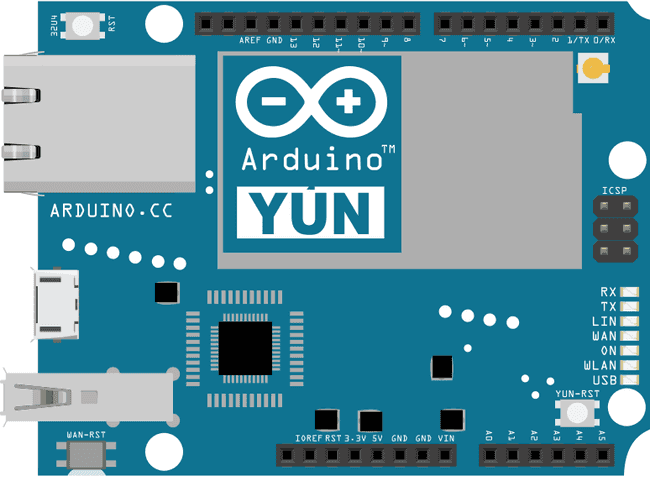Arduino Yún HTTP Client
Create a simple client that downloads a webpage and prints it to the serial monitor.
This example for a Yún device shows how create a basic HTTP client that connects to the internet and downloads content. In this case, you'll connect to the Arduino website and download a version of the logo as ASCII text.
Open the Serial Monitor in the IDE once you've programmed the board.
Hardware Required
Yún board or shield
a wireless network connection to the internet
Circuit
There is no circuit for this example.

image developed using Fritzing. For more circuit examples, see the Fritzing project page
Code
Include both the Bridge and HttpClient libraries
1#include <Bridge.h>2#include <HttpClient.h>In
setup()loop()1void setup() {2
3 pinMode(13, OUTPUT);4
5 digitalWrite(13, LOW);6
7 Bridge.begin();8
9 Serial.begin(9600);10
11 while(!Serial);12}In
loop()client.get(url)1void loop() {2
3 HttpClient client;4
5 client.get("http://www.arduino.cc/asciilogo.txt");As long as there are bytes from the server in the client buffer, read the bytes and print them to the serial monitor. Repeat every 5 seconds.
1while (client.available()) {2
3 char c = client.read();4
5 Serial.print(c);6
7 }8
9 Serial.flush();10
11 delay(5000);12}The complete sketch is below :
Last revision 2016/05/25 by SM
Suggested changes
The content on docs.arduino.cc is facilitated through a public GitHub repository. You can read more on how to contribute in the contribution policy.
License
The Arduino documentation is licensed under the Creative Commons Attribution-Share Alike 4.0 license.